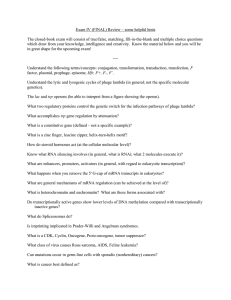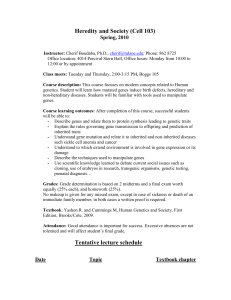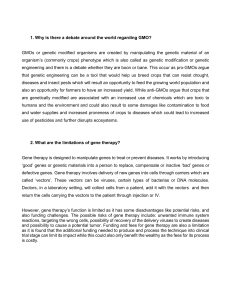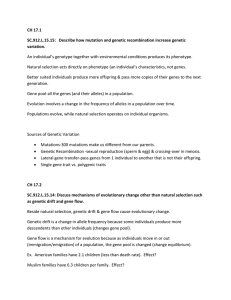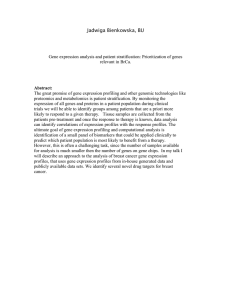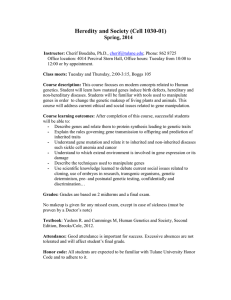secondary school summary
advertisement
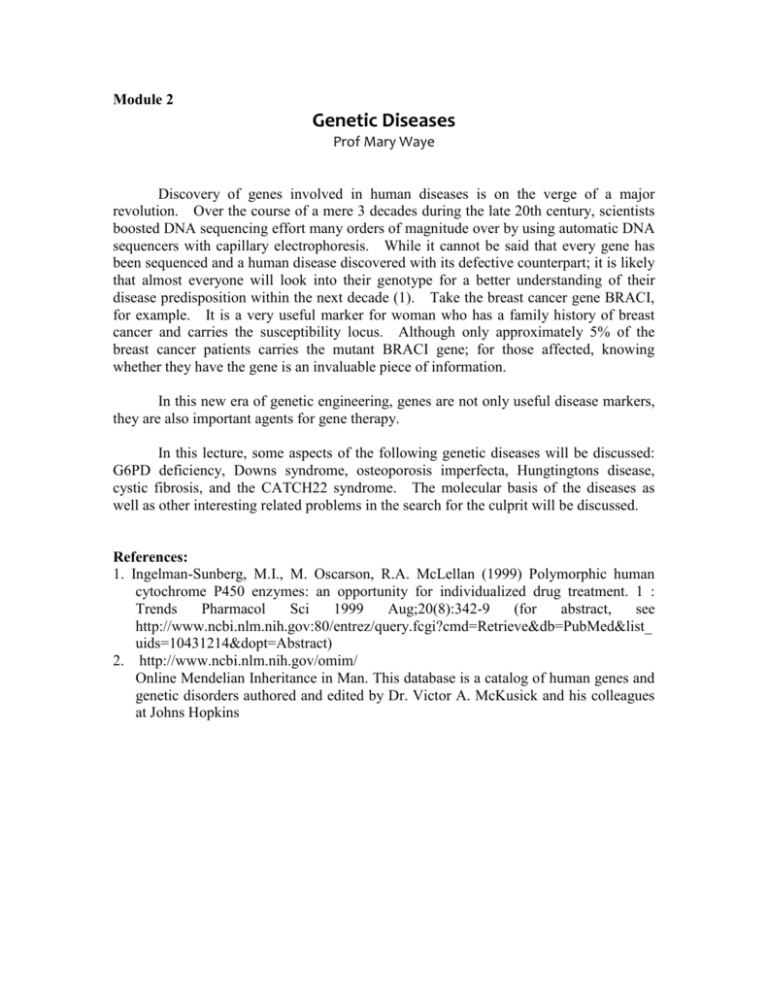
Module 2 Genetic Diseases Prof Mary Waye Discovery of genes involved in human diseases is on the verge of a major revolution. Over the course of a mere 3 decades during the late 20th century, scientists boosted DNA sequencing effort many orders of magnitude over by using automatic DNA sequencers with capillary electrophoresis. While it cannot be said that every gene has been sequenced and a human disease discovered with its defective counterpart; it is likely that almost everyone will look into their genotype for a better understanding of their disease predisposition within the next decade (1). Take the breast cancer gene BRACI, for example. It is a very useful marker for woman who has a family history of breast cancer and carries the susceptibility locus. Although only approximately 5% of the breast cancer patients carries the mutant BRACI gene; for those affected, knowing whether they have the gene is an invaluable piece of information. In this new era of genetic engineering, genes are not only useful disease markers, they are also important agents for gene therapy. In this lecture, some aspects of the following genetic diseases will be discussed: G6PD deficiency, Downs syndrome, osteoporosis imperfecta, Hungtingtons disease, cystic fibrosis, and the CATCH22 syndrome. The molecular basis of the diseases as well as other interesting related problems in the search for the culprit will be discussed. References: 1. Ingelman-Sunberg, M.I., M. Oscarson, R.A. McLellan (1999) Polymorphic human cytochrome P450 enzymes: an opportunity for individualized drug treatment. 1 : Trends Pharmacol Sci 1999 Aug;20(8):342-9 (for abstract, see http://www.ncbi.nlm.nih.gov:80/entrez/query.fcgi?cmd=Retrieve&db=PubMed&list_ uids=10431214&dopt=Abstract) 2. http://www.ncbi.nlm.nih.gov/omim/ Online Mendelian Inheritance in Man. This database is a catalog of human genes and genetic disorders authored and edited by Dr. Victor A. McKusick and his colleagues at Johns Hopkins
